Do you often drink coffee or hot drinks in disposable paper cups? For many people, buy a cup of hot milk for breakfast in the morning, buy a cup of hot coffee at noon for refreshing, and order a cup of milk tea in the afternoon to "renew your life"...Unknowingly, I used three disposable paper cups a day.
But what you don’t know is that you can drink hundreds of thousands of "plastic pellets" in a day if you drink a hot drink in a paper cup.
Use disposable paper cups to drink hot drinks, and tens of thousands of plastic particles are drunk into the body!
In November 2020, a research team from the Indian Institute of Technology published a research article in the Journal of Hazardous Materials, showing that hot coffee or other hot beverages in disposable paper cups will be released within 15 minutes. Thousands of potentially harmful substances, namely plastic particles, are released into the beverage.
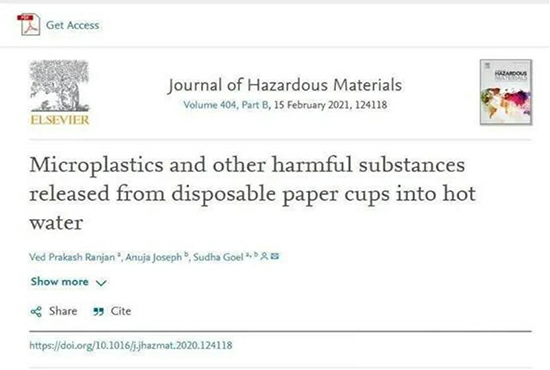
In the experiment, the researchers poured ultrapure water with a temperature between 85°C and 90°C into a disposable paper cup, and then let it stand for 15 minutes. The hot liquid is then analyzed under a fluorescence microscope to detect changes in the physical, chemical and mechanical properties of the plastic lining.
The author of the research correspondence, Dr. Sudha Goel, Indian Institute of Technology, School of Environmental Science and Engineering, said: "The microplastic layer in a paper cup containing hot coffee or hot tea will degrade within 15 minutes. It will release 25,000 micron-sized particles into hot drinks. An ordinary person who drinks three cups of tea or coffee in a disposable paper cup every day will ingest 75,000 plastic particles that are invisible to the naked eye."
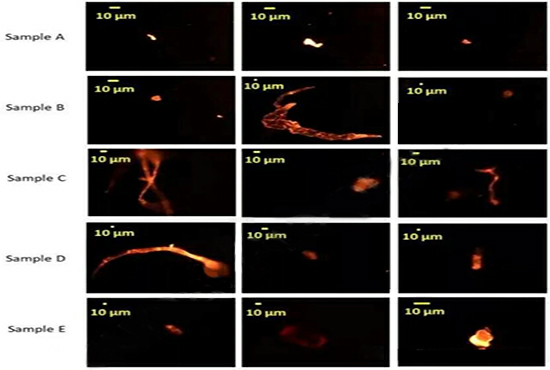
After standing for 15 minutes, the microplastics observed under a fluorescence microscope at 20 times.
Researchers said that these almost invisible microplastics are becoming a major threat to human health. Their diameter is generally less than 5 mm, but may be only one-fifth the width of our hair.
Microplastics are entering the body, which is equivalent to eating a credit card every week!
Microplastic is a material composed of polymer-containing solid particles with a diameter of less than 5 mm. Its main components include polyethylene, polypropylene, polystyrene, polyvinyl chloride, polylactic acid and polyethylene terephthalate etc.
It is neither soluble in water nor biodegradable.In mid-2019, the University of Newcastle in Australia was commissioned by the World Wide Fund for Nature to synthesize the existing 52 research data.The global per capita plastic intake is estimated, and the results warn people that the global average per capita intake of plastic particles per week is 5 grams of plastic, roughly equivalent to the weight of a credit card.
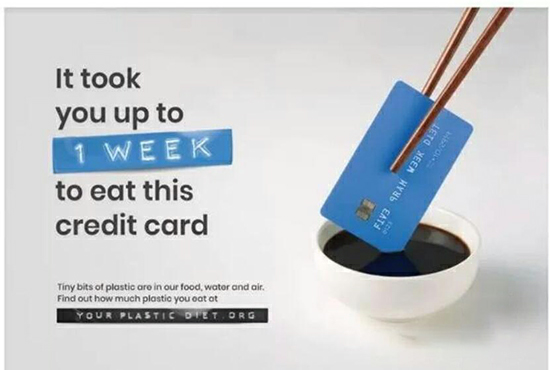
WWF poster: You ate a credit card in a week
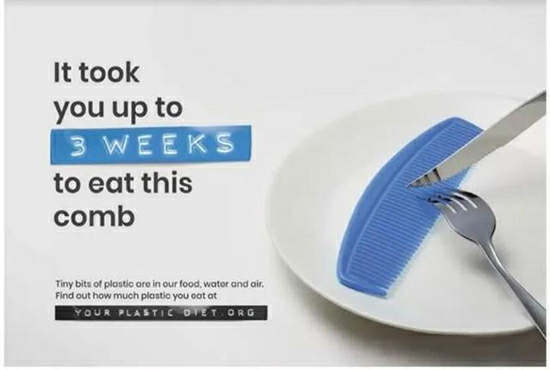
WWF poster: You ate a comb in three weeks
At the European Society of Gastroenterology in 2018, researchers reported that for the first time, as many as 9 types of microplastics were detected in human feces, with diameters between 50 and 500 microns. This research shows that plastic will eventually reach the human stomach. According to the logs provided by participants from eight different countries, they all ate food wrapped in plastic and drank bottled water, and six of them had also eaten seafood. There are 20 particles per 10 grams of stool sample. The most common particles are polypropylene (PP) and polyethylene terephthalate (PET), which are the main components of plastic bottles and bottle caps. This is really not an exaggeration! In fact, since we were babies, we have actually started to "eat" microplastics.
1. When you use a baby bottle, you start to eat microplastics.
A paper published in the journal Nature Food in October 2020 mentioned that infants may ingest more than 16 million microplastic particles per liter of infant formula prepared from polypropylene plastic bottles.
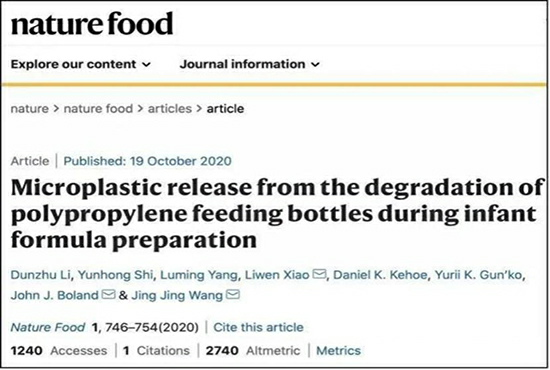
There are also microplastics in the tea and bottled water you drink.
Researchers at the State University of New York at Fredonia analyzed 159 tap water samples from 14 countries, 81% of which contained 0-61 particles per liter. So, how much microplastics can we eat? In 2019, a paper on "Human Consumption of Microplastics" in "Environmental Science and Technology" estimated that the amount of microplastics ingested by humans is as high as 39,000-52,000 per year. If you take into account the situation of incoming calls, this number will be 74,000-121,000. People who like to drink bottled water may consume 211,000 microplastics every year. Calculating it, about 578 microplastics are consumed every day on average.
There are also microplastics in the fruits, vegetables and meat products you eat.
According to a study published in "Nature·Sustainable Development", cracks in the roots of lettuce and wheat crops can absorb microplastics in soil and water, and then spread to edible parts. In this process, the transpiration of plants plays a role in promoting.
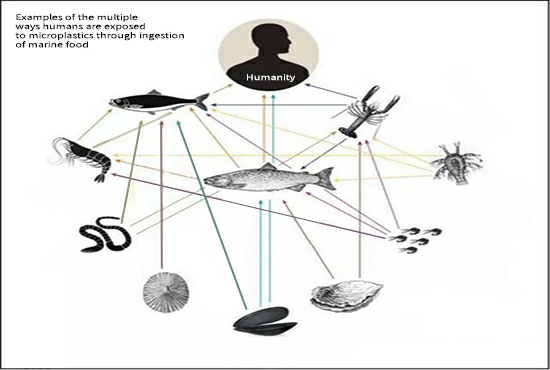
Of course, the fish in the ocean can't escape. There is evidence that microplastics can be transferred from the digestive tract of European anchovy and other species to the liver.
To reduce the hazards of microplastics, we do it!
In life, although we cannot completely avoid the use of plastic products, we can start from ourselves and minimize the use of plastics.
Use less plastic bags and more cloth bags
Went around the supermarket and got more plastic bags in your hand. It seemed convenient and trouble-free. In fact, you made more plastic waste! When you go out to buy things, bring a woven bag or cloth bag, which saves you hygiene.
Use less disposable paper cups and takeaway packaging boxes.
Coffee packaging cups, take-out packaging boxes... These take-out packaging are all plastic! Not to mention whether hot coffee will produce harmful substances when it comes into contact with plastic, a cup of coffee every day, you create plastic garbage!
Use less plastic straws.
Using one less straw will also help reduce plastic waste. According to statistics, after a convenience store stopped supplying straws, the amount of plastic saved within one year was considerable.
Don't litter plastic products.
Plastic bottles and plastic bags should not be littered. Put them in designated trash bins. Sorting the garbage can reduce environmental pollution and reduce the chance of harm to yourself.
The best choice is biodegradable plastic.
"Limited plastics" and "Prohibited plastics" cannot completely eliminate the use of plastics. If you must use them, choosing biodegradable plastics can reduce the pollution of ordinary plastics to the environment.

